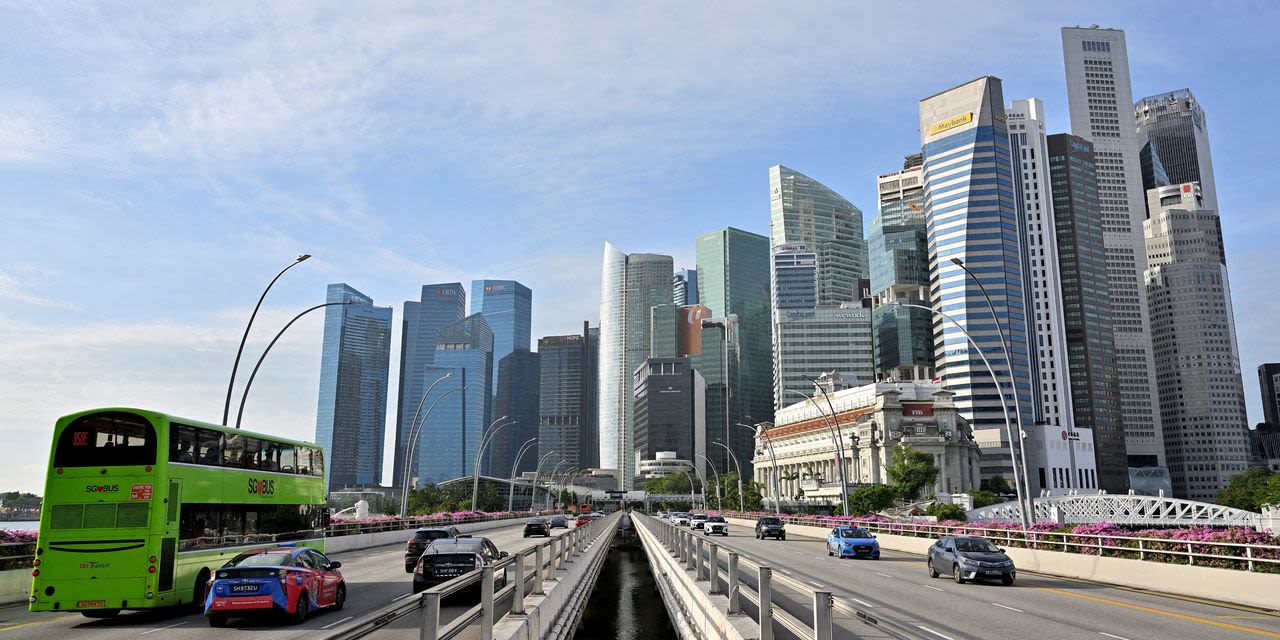Search results
News about Singapore Airlines, turbulence, injuries
Singapore, officially the Republic of Singapore, is an island country and city-state in maritime Southeast Asia.
- dd/mm/yyyy
1 day ago · Singapore (Chinese: 新加坡; Malay: Singapura; Tamil: சிங்கப்பூர்) is a city-state in Southeast Asia. Modern Singapore was founded as a British trading colony in 1819, and since independence, it has become one of the world's most prosperous countries and boasts one of the world's busiest ports.
- Overview
- Relief
- Drainage and soils
- Climate
- Plant and animal life
- Settlement patterns
Singapore, city-state located at the southern tip of the Malay Peninsula, about 85 miles (137 kilometres) north of the Equator. It consists of the diamond-shaped Singapore Island and some 60 small islets; the main island occupies all but about 18 square miles of this combined area. The main island is separated from Peninsular Malaysia to the north by Johor Strait, a narrow channel crossed by a road and rail causeway that is more than half a mile long. The southern limits of the state run through Singapore Strait, where outliers of the Riau-Lingga Archipelago—which forms a part of Indonesia—extend to within 10 miles of the main island.
Singapore is the largest port in Southeast Asia and one of the busiest in the world. It owes its growth and prosperity to its focal position at the southern extremity of the Malay Peninsula, where it dominates the Strait of Malacca, which connects the Indian Ocean to the South China Sea. Once a British colony and now a member of the Commonwealth, Singapore first joined the Federation of Malaysia on its formation in 1963 but seceded to become an independent state on August 9, 1965.
Nearly two-thirds of the main island is less than 50 feet (15 metres) above sea level. Timah Hill, the highest summit, has an elevation of only 531 feet (162 metres); with other peaks, such as Panjang and Mandai hills, it forms a block of rugged terrain in the centre of the island. To the west and south are lower scarps with marked northwest-southe...
A dense network of short streams drains the island, but floods are locally severe because the streams have low gradients and because of excessive water runoff from cleared land. Many streams, especially those draining northward, have broad mangrove-fringed estuaries that extend far inland. None of the soils is even reasonably fertile, but those derived from the granites tend to be better than most. Soils developed from the sedimentary rocks are variable, but many contain hardpans (compacted layers) that restrict plant roots and impede soil drainage. The soils of eastern Singapore are extremely infertile. All have suffered extensive degradation through erosion as a result of generations of careless human exploitation.
Britannica Quiz
Singapore is in the equatorial monsoon region of Southeast Asia, and its climate is characterized by uniformly high temperatures and nearly constant precipitation throughout the year. The average monthly temperature varies from about 81° F (27° C) in June to 77° F (25° C) in January. The daily range is somewhat greater, averaging about 13° F (7° C). Singapore’s maritime location and constant humidity, however, keep maximum temperatures relatively moderate: the highest temperature ever recorded was only 97° F (36° C).
The seasons are defined by the relative incidence of rainfall, which, in turn, is determined by the movements of the monsoon air masses. The wettest and windiest period is during the northeast monsoon (November–March), with rainfall reaching an average monthly high of more than 10 inches (250 millimetres) in December. Conversely, the period of the least amount of rainfall and the lightest winds is during the southwest monsoon (May–September), with rainfall dropping to a monthly low of less than 7 inches in July. April and October are intermonsoonal periods characterized by sluggish air movements and intense afternoon showers and thunderstorms. Altogether, Singapore’s precipitation averages about 95 inches annually, and rain falls somewhere on the island every day of the year.
Are you a student? Get Britannica Premium for only 24.95 - a 67% discount!
Learn More
Little remains of the original vegetation or animal life, except for a few thousand acres of evergreen rain forest preserved around catchment areas. Some mangrove vegetation survives in the Kranji area on the northwest side of the island, but elsewhere tracts of scrub or cogon grass (called lalang locally) are common. Many exotic plants have been i...
The city of Singapore is situated in the southern portion of the main island. Over time, urbanization has blurred the differences between city and country. Built-up areas now cover a large part of the city-state. The older parts of the city have been substantially refurbished, especially along the Singapore River but elsewhere as well. The once-com...
Mar 7, 2024 · Discover Singapore's best attractions, from hawker food to Marina Bay, from historic neighborhoods to nature trails. Whether you have a short trip or a layover, this guide will help you plan your itinerary and enjoy the city-state.
Mar 9, 2024 · Learn about Singapore's culture, climate, safety, and attractions from a local perspective. Find out how to pack, pay, and plan for your trip to the Little Red Dot.
- DictionarySin·ga·pore/ˈsiNGəˌpôr/
- 1. a country in Southeast Asia that consists of the island of Singapore (linked by a causeway to the southern tip of the Malay Peninsula) and about 54 smaller islands; population 5,600,000 (estimated 2015); capital, Singapore City; official languages, Malay, Chinese, Tamil, and English.






